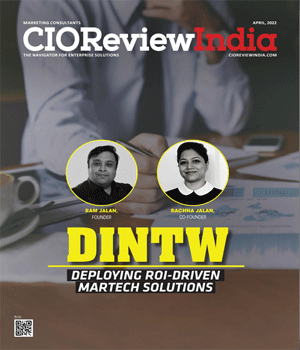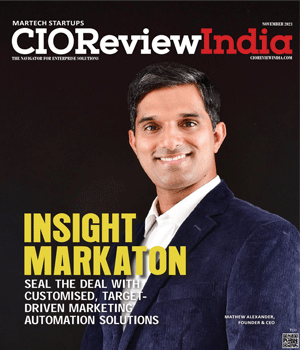
How to Make your Customer Data Actionable
Susan Ganeshan, CMO, Clarabridge | Tuesday, 12 July 2016, 08:55 IST
 Know your customers to the core. It’s a mantra every marketer lives and breathes as they collect hundreds of thousands of data points each day— athering information on what customers buy, what their preferences are, what they think about your brand, what they do online and beyond. While customer data is incredibly valuable, it can also leave marketers feeling overwhelmed. And that’s completely understandable. According to an estimate by Digital Universe, there will be 5,200 gigabytes of data for every human on Earth by 2020.
Know your customers to the core. It’s a mantra every marketer lives and breathes as they collect hundreds of thousands of data points each day— athering information on what customers buy, what their preferences are, what they think about your brand, what they do online and beyond. While customer data is incredibly valuable, it can also leave marketers feeling overwhelmed. And that’s completely understandable. According to an estimate by Digital Universe, there will be 5,200 gigabytes of data for every human on Earth by 2020.
Although overwhelming, the proliferation of data sources gives marketers the opportunity to know customers and understand what drives their actions and opinions. This information can help companies improve customer experience, build more effective business strategies and create better products. But you won’t see the ROI unless you collect the right data, dig deep into it to truly understand, and make those insights actionable.
Here’s how to manage data, make sense of it, and turn customer insights into actionable initiatives:
Collect Data from Multiple Sources
Start by collecting real-time insights from multiple sources. The more customer data you can get your hands on, the better. While massive amounts of data can be daunting, it’s important to have a clear and accurate understanding of who your customers are, how they act, and what they think of your brand.
Combine behavioral and demographic customer data with both solicited and unsolicited feedback. Solicited feedback, often collected via surveys or your company feedback forms, allows companies to gain insight customer pain points, wants and desires. Meanwhile, unsolicited feedback captures candid customer opinions about your brand and customer needs. Track social networks, review sites, online forums, email exchanges and call center conversations carefully. For example, a hotel marketer may receive feedback from comment cards and post-stay surveys, but for a more comprehensive understanding of customer experience, it’s important to look at TripAdvisor reviews, Tweets and calls to the front desk.
Once you’re armed with customer data, it’s time to analyze what these metrics mean.
Dig for the “Why”
As you’re analyzing customer data, you will be able to identify major trends. However, you’ll need to take your analysis a step further, digging into the “who” and “why.” It’s important to know what drives trends across different customer segments. Getting at the “why” can be a bit more difficult, especially when you’re juggling a lot of data, but there are a few ways to simplify the task.
Start by tracking the type of language that is used to talk about your brand. Pull out keywords, phrases and general tone. Slice the feedback up across your customers’ demographic data and customer engagement history. This should give you a better understanding of what is causing certain trends in feedback. If you notice your negative feedback occurs during certain hours, you may have under-trained employees working during that shift. Alternatively, if you’re seeing customers unhappy with call center wait times, you may want to invest in more resources in social customer care teams or online chat capabilities. Filtering this information into a dashboard can help you stay organized and may even help you identify and visualize cause and effect patterns.
There are also a number of customer analytics and text analytics tools to automate the process. These tools comb through data, analyzing the meaning behind the feedback so that data doesn’t have to be reviewed manually.
Bring the Whole Company Onboard
With a clear understanding of what your customers are thinking and why, you’re ready to take action. The marketing team is responsible for collecting, analyzing and explaining data, but the entire company is responsible for acting on those insights. Bring your entire company on board by sharing data broadly across the organization. Present insights in a way that is relevant to each department and be ready to explain how each team can make an impact on the customer experience.
Encourage each department to take customer feedback to heart, internalize insights and adjust strategy accordingly. For example, if customers in one geography are concerned about the artificial sweetener used in the cola your company produces, the product team should consider creating alternate products for that area. Similarly, if frequent customers have needs and opinions that risk their longtime loyalty, look for ways to address those customers before addressing the general population's needs.
These days there’s no shortage of customer feedback, and that’s a great thing. Marketers have access to more data than ever before to understand how their brand is faring in the eyes of consumers. In truth, each data point is an opportunity to learn more about your customer, improve strategy, and grow your company. While this presents some unique challenges, customers are voicing their opinions to a larger and larger audience, allowing businesses to act on this real-time, candid feedback. Companies that are committed to acting on insights are sure to have a leg up on the competition as they address customer concerns and build loyalty by giving customer exactly what they want. By listening, analyzing, and taking action, you’ll see growth and accountability across your organization.
CIO Viewpoint
Marketing Tech - A CIO Perspective
By Satish Panchapakesan, Senior Vice President & CIO, Arvind Fashions
Blockchain Based Cybersecurity For IoT
By Arunmani Subramanian, VP - Emerging Technologies, YASH Technologies
Data Science & Machine Learning In Fintech
By Jainendra Kumar, Head - Global Delivery Center-India & Senior Director Product Development Software, Diebold NixDorf
CXO Insights
Cyber Security - A Perspective
By Manu Sharma, Director - Information Technology And Corporate Security, OnMobile Global Limited
How Low-Code Is Transforming The Future Of Work...
By Deepak Pargaonkar, VP - Solution Engineering, Salesforce
Incorporating Blockchain Capabilities into...



.jpg)









